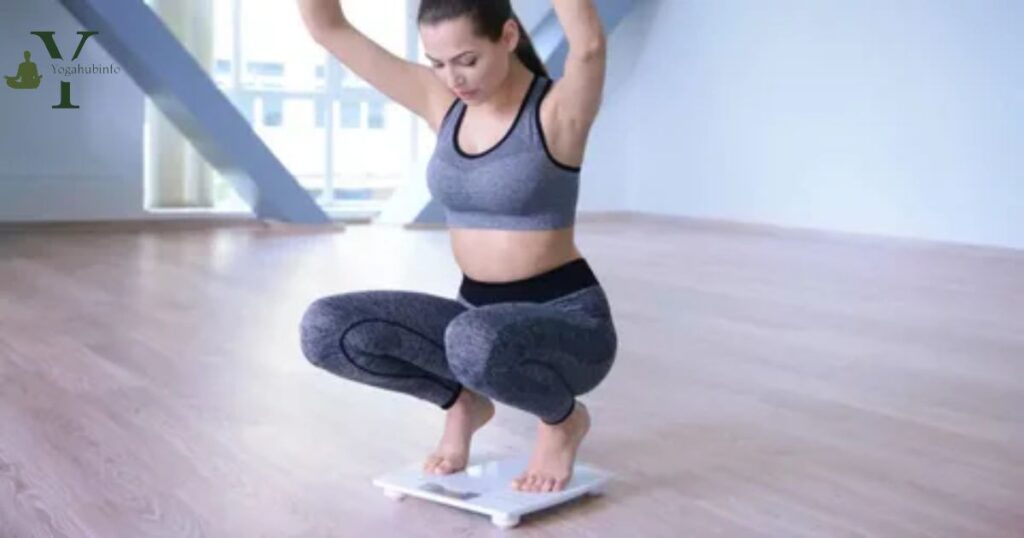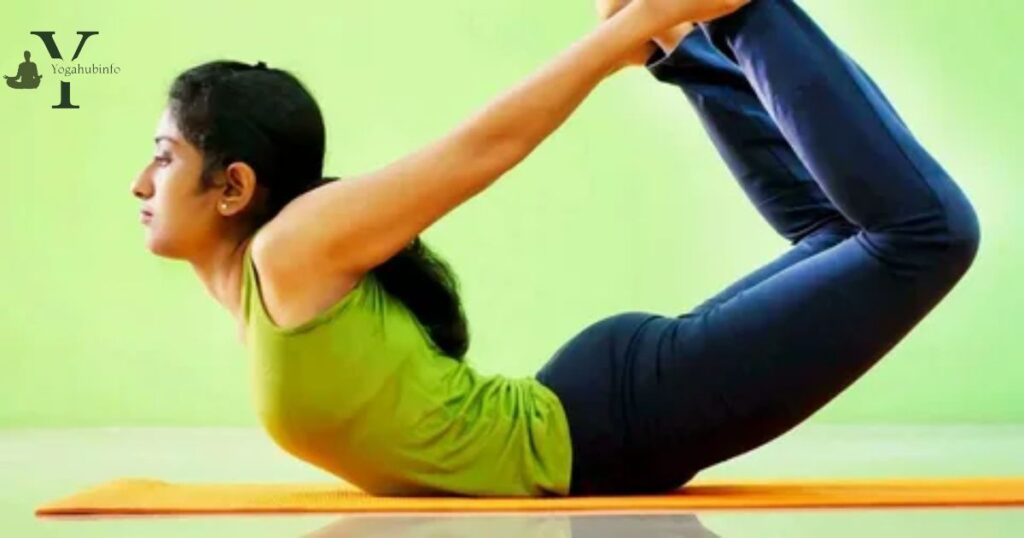Yoga is a mind body practice originating from ancient India, integrating physical postures, breath control, and meditation for holistic well-being. It aims to cultivate harmony between the body and mind, promoting flexibility, strength, and inner peace.
Yoga stands as a spiritual discipline rooted in a nuanced science, dedicated to fostering balance between the mind and body, an intricate blend of art and the pursuit of wholesome living. Its etymology traces back to the Sanskrit root ‘Yuj,’ signifying ‘to join,’ ‘to yoke,’ or ‘to unite.’ In accordance with Yogic scriptures, engaging in Yoga facilitates the convergence of individual consciousness with the Universal Consciousness, symbolizing a seamless alignment between mind and body, as well as the harmony between humanity and nature.
Modern scientific perspectives echo this interconnectedness, positing that all elements in the universe emanate from a shared quantum foundation. One who perceives this unity of existence is said to be in a state of yoga, recognized as a yogi, having attained a condition of liberation referred to as mukti, nirvana, or moksha. Thus, Yoga’s ultimate objective is Self-realization, transcending various forms of suffering to attain a state of liberation (Moksha) or freedom (Kaivalya). The essence of Yoga practice lies in fostering freedom across all facets of life, with a focus on health and harmony.
The term “Yoga” extends beyond a physical practice; it encompasses an inner science comprising diverse methods through which individuals can realize this union and gain control over their destinies. Widely acknowledged as an enduring cultural legacy stemming from the Indus Saraswati Valley civilization around 2700 B.C., Yoga has demonstrated its capacity to uplift humanity both materially and spiritually. Fundamental humane values define the essence of Yoga Sadhana, making it an invaluable guide for individuals seeking a profound connection with themselves and the world.
A Best Guide
- Yoga’s history dates back thousands of years, with its origins traced to ancient Indian scriptures, particularly the Vedas and the Upanishads. The word “yoga” itself is derived from the Sanskrit word “yuj,” meaning to yoke or unite. The practice was initially developed as a means to attain spiritual enlightenment and self-realization.
Philosophy of Yoga
- At its core, yoga is a philosophy that encompasses physical postures (asanas), breath control (pranayama), meditation, ethical principles (yamas and niyamas), and a path towards self-realization. The overarching goal is to achieve a harmonious union of mind, body, and spirit.
Different Paths of Yoga
- Yoga offers various paths to suit diverse personalities and goals. The paths include Hatha Yoga (physical postures), Bhakti Yoga (devotion), Karma Yoga (selfless action), Jnana Yoga (knowledge), and Raja Yoga (meditation and control of the mind). Each path provides a unique approach to self-discovery and personal growth.
Physical Aspects of Yoga
- Hatha Yoga, the most commonly practiced form, focuses on physical postures and breath control. These asanas not only enhance flexibility, strength, and balance but also promote overall health and well-being. Regular practice can alleviate stress, improve posture, and enhance body awareness.
Mental and Emotional Benefits
- Yoga is renowned for its positive impact on mental and emotional health. Through mindfulness and meditation, practitioners learn to cultivate a calm and focused mind, reduce anxiety and depression, and enhance emotional resilience. The practice encourages self-reflection and a deeper understanding of one’s thoughts and emotions.
Spiritual Dimension
- Many individuals turn to yoga for its spiritual aspects, seeking a deeper connection with their inner selves or a higher power. Through meditation and introspection, practitioners explore the realms of consciousness, experiencing a sense of unity with the universe.
Practical Tips for Beginners
- For those new to yoga, incorporating the practice into daily life may seem daunting. This guide offers practical tips, such as finding the right style for your needs, creating a consistent practice routine, and respecting your body’s limitations.
Yoga and Modern Lifestyle
- In today’s fast-paced world, where stress and sedentary lifestyles are prevalent, yoga serves as a valuable tool for maintaining balance. Its adaptability makes it accessible to people of all ages and fitness levels, providing a timeless solution to contemporary challenges.
Definitions in classical texts of Yoga
| Text | Definition |
| Patanjali’s Yoga Sutras | Yoga is the restraint of the modifications of the mind. It consists of eight limbs, including ethical principles, physical postures, breath control, and meditation. |
| Bhagavad Gita | Yoga is the path of selfless action and devotion, emphasizing the union of the individual soul with the Supreme. Krishna describes different yogas, including Karma Yoga (the path of action) and Bhakti Yoga (the path of devotion). |
| Hatha Yoga Pradipika | Focuses on physical postures (asanas), breath control (pranayama), and purification techniques to balance and harmonize the body and mind. |
| Upanishads | Yoga is often discussed as a means to realize the ultimate reality (Brahman) through meditation, knowledge, and self-realization. |
| Yoga Upanishads | Explore various aspects of Yoga, including breath control, meditation, and the awakening of spiritual energy (kundalini). |
| Srimad Bhagavatam | Describes different types of yoga, such as Karma Yoga, Bhakti Yoga, and Jnana Yoga, highlighting devotion, knowledge, and selfless action. |
Classical texts of Yoga provide clear definitions. The Yoga Sutras of Patanjali, for example, elucidate the essence of Yoga as a union of mind, body, and spirit. These definitions emphasize the holistic nature of Yoga, extending beyond mere physical postures.
Classical texts underscore the significance of self-discipline and moral conduct. They portray Yoga not just as a set of exercises but as a comprehensive lifestyle, promoting inner peace and self-realization. The definitions guide practitioners towards a balanced and harmonious life.
Within these classical texts, various paths of Yoga are elucidated. Whether through meditation, devotion, or selfless service, the common goal is spiritual enlightenment. These definitions serve as beacons, inspiring individuals on their unique journeys toward a more profound understanding of themselves and the world around them.
The History and Development of Yoga
Origins of Yoga
Yoga, an ancient practice, traces its roots back over 5,000 years to the Indus-Sarasvati civilization in Northern India. Initially, yoga was a spiritual discipline focusing on the union of mind, body, and spirit. The earliest references to yoga can be found in ancient texts like the Rig Veda, highlighting its deep cultural and philosophical significance.
Evolution through the Ages
Over time, yoga evolved, taking on various forms and philosophies. Classical Yoga, as outlined in Patanjali’s Yoga Sutras around 200 BCE, emphasized the eight limbs of yoga, including ethical guidelines, physical postures (asanas), and meditation. In the later centuries, different schools of yoga emerged, such as Hatha, Bhakti, and Jnana, each offering unique approaches to achieving spiritual harmony.
Global Spread and Modern Adaptations
In the 20th century, yoga transcended its cultural origins and gained widespread popularity globally. Pioneers like Swami Vivekananda and Paramahansa Yogananda introduced yoga to the West, fostering a growing interest in physical postures and breath control. Today, yoga has become a versatile practice, embraced for its physical, mental, and spiritual benefits. It has adapted to modern lifestyles, with various styles like Vinyasa, Bikram, and Power Yoga catering to diverse preferences and needs.
Yoga Sadhana Fundamentals

Yoga Sadhana Fundamentals are essential for a strong foundation in yoga practice. Begin with proper breathing techniques, focusing on deep inhales and exhales. This foundational step helps calm the mind and enhances overall well-being.
In Yoga Sadhana, mastering basic poses is crucial. Start with simple asanas like Mountain Pose and Downward Dog. These postures build strength, flexibility, and balance, laying the groundwork for more advanced poses in your yoga journey.
Consistency is key in Yoga Sadhana. Regular practice brings about physical and mental transformation. Set a realistic routine, stay committed, and witness the positive impact on your body, mind, and soul. Yoga Sadhana Fundamentals are the gateway to a healthier and more mindful lifestyle.
Losing weight through yoga is possible?

Losing weight through yoga is achievable. Yoga involves various poses and movements that engage muscles and promote flexibility. This physical activity can help burn calories and contribute to weight loss in a gentle and sustainable way.
Yoga also addresses mental well-being, reducing stress and emotional eating. Mindful practices like meditation and deep breathing can create a positive mindset, making it easier to make healthier food choices. By fostering a holistic approach, yoga supports weight loss from both a physical and mental perspective.
Additionally, yoga encourages a balanced lifestyle. Regular practice promotes better sleep, which is linked to weight management. The emphasis on self-awareness in yoga may lead to increased mindfulness about eating habits. Overall, incorporating yoga into your routine can contribute to a healthier body and support weight loss goals.
What are the benefits of yoga for quitting smoking?

Yoga offers a path to quit smoking with its calming effects on the mind and body. Deep breathing exercises in yoga help reduce stress and anxiety, common triggers for smoking. The practice fosters mindfulness, redirecting focus from cravings to the present moment.
Engaging in regular yoga sessions can improve lung capacity and overall respiratory function. As individuals commit to yoga, they often experience enhanced physical well-being, making the transition from smoking to a healthier lifestyle more manageable. The increased awareness of the body’s sensations can also discourage the desire to smoke.
Yoga serves as a positive outlet for stress, a key factor in smoking cessation. The practice promotes relaxation and a sense of inner balance, aiding individuals in managing the challenges of quitting. By incorporating yoga into their journey, individuals can find support not only in breaking the habit but also in cultivating a holistic and healthier lifestyle.
What is the impact of yoga on mental health?

Yoga, an ancient practice rooted in mindfulness and physical postures, has gained widespread recognition for its positive impact on mental health. The combination of breath control, meditation, and gentle movements forms a holistic approach that extends beyond physical well-being.
Stress Reduction
One of the significant benefits of yoga is its ability to reduce stress. Through controlled breathing and focused mindfulness, individuals can calm their minds, lowering stress hormones like cortisol. Regular practice has been linked to improved emotional well-being, helping individuals better cope with the challenges of daily life.
Enhanced Mental Well-being
Yoga promotes mental well-being by fostering a sense of inner peace and balance. The mind-body connection cultivated through yoga encourages self-awareness, emotional resilience, and a positive outlook. As individuals continue to practice yoga, they often report improved mood, reduced anxiety, and an overall enhanced sense of mental clarity and tranquility.
What are the benefits of yoga for menopause symptoms?
Yoga can be a helpful companion for women going through menopause. The gentle and controlled movements in yoga can aid in reducing hot flashes and night sweats. Regular practice may also enhance mood, promoting emotional well-being during this transitional phase.
Menopause often brings about sleep disturbances, but yoga’s relaxation techniques can improve sleep quality. Additionally, certain yoga poses can strengthen bones, combating the bone density loss that sometimes accompanies menopause. This dual benefit supports overall physical health during this life stage.
Stress management is crucial during menopause, and yoga offers effective stress relief through mindful breathing and meditation. It can help regulate hormonal fluctuations, easing symptoms like irritability and anxiety. Embracing yoga as a part of the menopausal journey may bring about a sense of balance, both physically and emotionally.
Frequently Asked Questions
What is yoga?
- Yoga is a holistic practice that combines physical postures, breath control, and meditation to promote overall well-being and balance of the mind, body, and spirit.
How does yoga benefit the body?
- Yoga enhances flexibility, strength, and cardiovascular health, while also reducing stress and improving mental clarity through its mindful approach to movement and breath.
Is yoga a religious practice?
- While yoga has historical ties to spiritual traditions, it is not inherently religious. Modern yoga is often approached as a secular practice focusing on physical and mental well-being.
Can beginners do yoga?
- Absolutely, yoga welcomes practitioners of all levels. Beginners can start with basic poses and gradually progress, adapting the practice to their comfort and ability.
Is yoga only about physical postures?
- No, yoga extends beyond postures; it includes breathwork (pranayama) and meditation. The integration of these elements cultivates a deeper connection between the body, mind, and spirit.
Final Thoughts
Yoga is a holistic practice that transcends the mere physical realm, encompassing the union of mind, body, and spirit. Originating from ancient Indian traditions, yoga is not just a set of physical postures but a profound philosophy that seeks to harmonize the individual with the cosmos. It delves into self-awareness, encouraging practitioners to explore the depths of their consciousness and connect with their inner selves. In essence, yoga serves as a transformative journey that extends beyond the mat, fostering a balanced and harmonious existence.
Beyond its philosophical dimensions, yoga is a physical discipline that promotes flexibility, strength, and overall well-being. The various yoga poses, or asanas, are designed not only to enhance physical health but also to facilitate mental clarity and emotional stability. Through breath control and mindful movement, practitioners cultivate a sense of mindfulness, fostering a harmonious relationship between the body and mind.
Furthermore, yoga is a tool for stress management and relaxation in the modern, fast-paced world. The emphasis on deep breathing and meditation within the practice helps alleviate stress, reduce anxiety, and promote mental resilience. In a society marked by constant demands and pressures, yoga provides a sanctuary for individuals to find inner peace, balance, and a renewed sense of vitality. Ultimately, yoga is a multifaceted practice that extends far beyond the physical postures, offering a pathway to holistic well-being and self-discovery.
Yoga: Holistic practice harmonizing body, mind, and spirit through poses, breath control, and meditation, fostering well-being and inner balance.

Marcus Evergreen, with 8 years of yoga expertise, is the author behind yogahubinfo.com, sharing insights and wisdom in holistic well-being.











